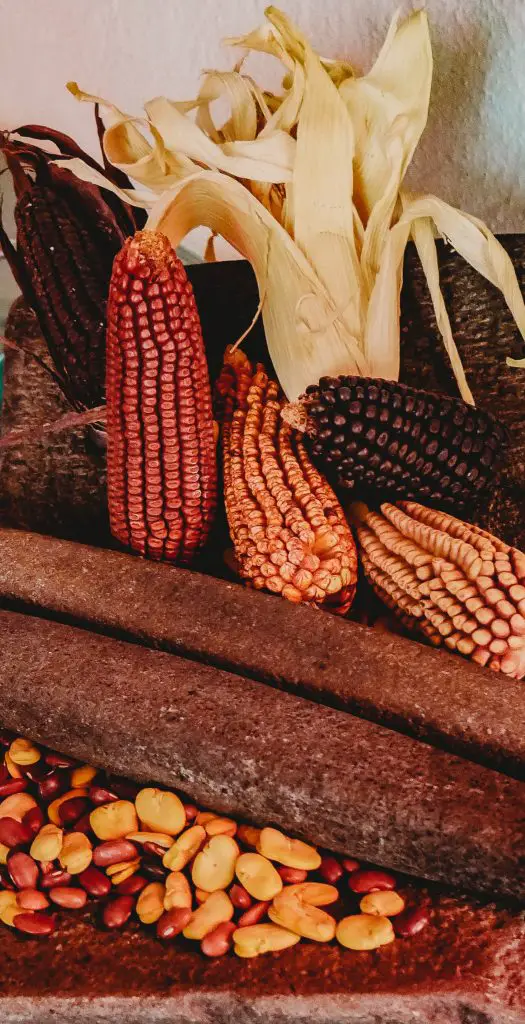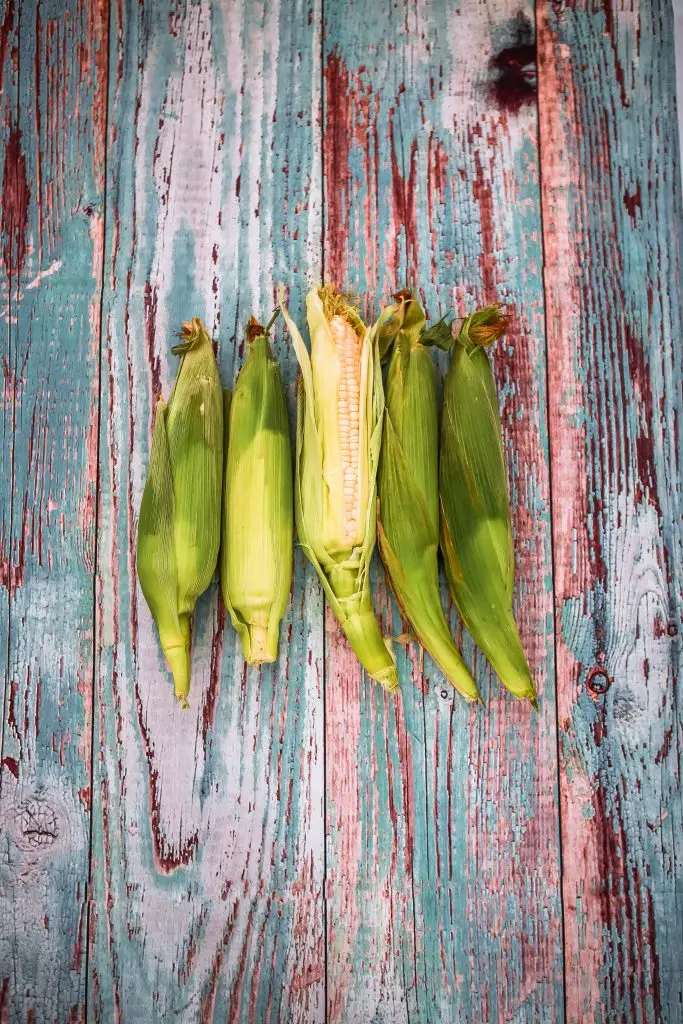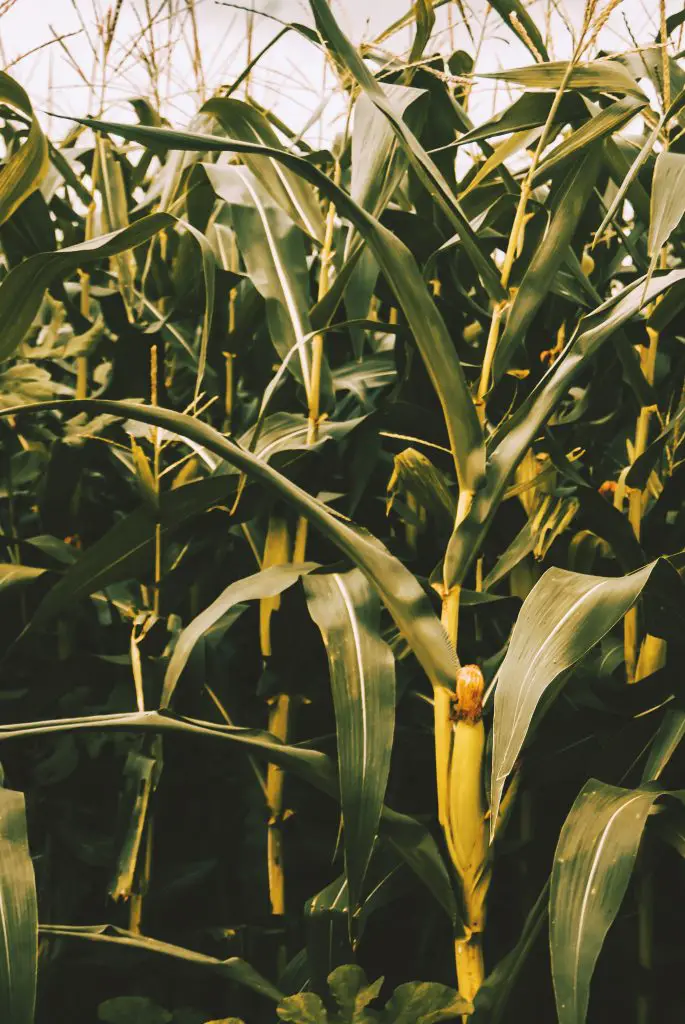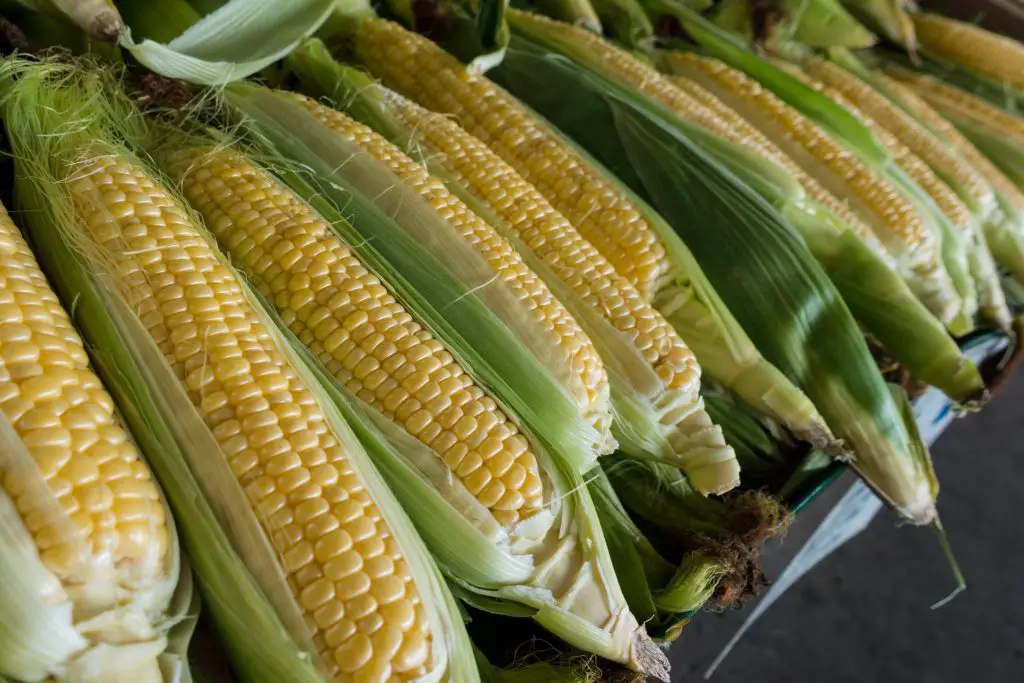Can You Save Corn Seeds For Next Year? Corn seeds can be saved quickly and easily every year, with little effort, by leaving a few ears of Corn on the stork. Allow the stork and ear to dry out, at the end of the season. Once the kernels on the cob are fully dry, they can be snapped off to create the seeds, for the following year. However, this can only be done with open pollinated varieties, as saving hybrid Corn seeds will not produce a variety that is true to type.
The vast majority of Sweet Corn, grown both commercially and by home gardeners, is an F1 Hybrid. F1 Hybrid seeds are produced by cross breeding two other varieties of Corn to produce the first generation of seeds, also know as F1 by geneticists. These varieties are selected, because they produce the desired properties within the Corn, which is most commonly, superior sweetness or disease resistance.
However, the properties of the Corn generated by this cross, cannot be sustained into successive generations, due to the natural cross pollination that occurs, during the normal growing cycle. To learn more about this, go to https://planyourpatch.com/what-is-an-f1-hybrid-seed/.
If you want to collect seed for the following year it is best to buy it from a company that specialises in heirloom seeds. The cheapest specialist heirloom seed company that I have been able to find in the US is Seeds Now, at the time of the writing this article they offer 6 varieties. St Clare Seeds are alittle more expensive but offer a wider selection of Corn. In the UK Thompson & Morgan offer a few different open pollinated varieties.
Maintaining The Properties Of Open Pollinated Corn
Corn is a plant that is pollinated by wind and will readily hybridise with other varieties, if given the opportunity. If hybridisation occurs, it will effect the quality of the seed collected and consequently, the qualities of the plants produced in subsequent generations.

To reduce the chances of this happening, plant only one variety of Corn in your backyard, ideally in a sheltered location, to protect the plants from the wind. Plant the Corn in blocks of plants, rather than rows, to encourage pollination from other Corn plants within that block.
When selecting which cobs to save for seed, choose the largest ones, as they will produce more seed, and they will encourage the formation of larger cobs in subsequent generations.
What Are Some Varieties Of Open Pollinated Corn
While Hybrid Corn seeds dominate the market, there are still many varieties of open pollinated Corn available for purchase, some of which are listed in the table below.
| Variety | Days to Harvest | Description |
| Wapsie Valley | 85 | Produces a plant that is 2m (7 ft) tall, with well formed ears that are mostly yellow, though some Maroon and Brown ears can appear. |
| Dublin | 86 | Produces tall plants that are 3 m (10 ft) tall, with large Yellow ears. It produces an outstanding yield, that is generally higher than the other open pollinated varieties. |
| Minnesota 13 | 87 | Produces slender 2.4 m (8 ft) tall plants with Yellow ears. Yield when in high fertility soils |
| Reid Yellow Dent | 105 | One of the most popular open-pollinated Yellow varieties that originated in 1847. Its ears have a deep Yellow, with a lighter cap, but a Reddish tinge often appears. |
| Silver King | 100 | Also know as Wisconsin No. 7, it originated in Iowa in 1862. It has White creamy kernels, with medium depth and thickness. |
| Bloody Butcher | 110 | Bloody Butcher, an old heirloom variety, dating back to mid 1800’s. It is a beautiful multi-purpose Corn that produces Red kernels. |
| Green Field | 114 | Produces tall plants that are 3 m with Bright, Yellow, cobs. |
| Blue Corn | 115 | An unusual variety the produces attractive dark Blue ears. |
| Lancaster Sure Crop | 115 | Produces towering plants that are 3 to 3.6m (10-12 ft) tall, with narrow ears. Primarily grown as a silo Corn. It is a lot of fun to show off to your neighbors your giant corn. |
| Golden Bantum | 76 | An old heirloom that was introduced in 1902, that has fantastic flavour, and is great for freezing or eating at home. Produces 1.8 m (6 ft) tall plants. |

How To Grow Corn
About Corn
Corn or Maize, is a member of the Grass family and originates from central America, and was developed from a wild grass known as Teosinte. Corn was originally grown for the production of Cornflour, however, later sweet varieties were bred for direct consumption.
As mentioned above, the majority of home gardeners grow the sweet variety from different F1 Hybrid seeds available. One of the key characteristics of many of the hybrids, is their level of sweetness, and their capacity to maintain that sweetness, for longer periods of time after harvest. The sweetness of the Corn reduces overtime, because the sugars within the kernel convert to starch, relatively quickly.
While this is highly beneficial to commercial growers to maintain the sweetness, it often provides little benefit to the home gardener, as most gardeners consume the Corn within few hours of harvesting them.
Growing Corn
Corn is a frost tender plant that requires warm conditions to thrive. Plants can be established by direct sowing into the soil, after the last frost, or they can be started earlier, in modular trays undercover. The seedlings will take approximately 4 to 6 weeks to get sufficiently large to plant outside. Seedlings established in a greenhouse should not be planted out until the risk of frost has passed.
When planting out Corn, they should be spaced 30cm (12 inches) apart in blocks, as the plants are wind pollinated. The soil should be moist but free draining, with plenty organic matter added. The Corn prefers a slightly acidic soil, with a pH of 6 to 7. In most cases, this is not a concern, however, if you would like to know more about how to test and change the pH of soil, go to https://planyourpatch.com/why-is-ph-important-in-soil/.
Corn will take typically 90 to 120 days, to be ready to harvest and the harvest period will last 4 weeks or so. 1-2 ears of Corn per plant, can be expected. To ensure an ongoing supply throughout the growing season, it is recommended that Corn be sown every 4 to 6 weeks, in the early part of the growing season.

To optimise the output of your garden, you may consider using the traditional “three sisters” method, where Corn is planted with climbing Beans and Pumpkin. The Beans are a legume that provides Nitrogen to the soil, while climbing up the Corn for support. The Pumpkin provides ground cover for the Corn, reducing weeds and moisture loss. To learn about Beans, click on https://planyourpatch.com/what-is-difference-between-dwarf-beans-and-climbing-beans/. To learn more about Pumpkin, click on https://planyourpatch.com/can-i-plant-pumpkin-seeds-from-a-store-bought-pumpkin/.
Other variations on the three sister method, includes using either Watermelons or Cucumbers as alternative ground covers. To learn about the best varieties of Watermelons to grow, go to https://planyourpatch.com/what-is-the-best-watermelon-to-grow/. To learn about Cucumbers, click go to https://planyourpatch.com/why-do-my-cucumbers-bloom-but-dont-produce/.
Harvesting And Storing Corn
When Corn is approaching the period in which it may be harvested, the silks coming out the top of the ear of Corn will begin to go Brown, they initially start out White. This is an indicator that it is worth testing the Corn, to see if it is ripe.
To check the ripeness of Corn, peel back the outer layers on the ear and pierce a kernel with your thumb nail. If the liquid that is coming out is milky, it is ready to harvest. If the liquid is clear, cover the Corn up again with the outer husk layers, and test again in a few days.

When the Corn is ready, it is best eaten immediately after it is picked, however, it can be stored in a fridge for a few days, but the sweetness will progressively reduce. The other option is to blanch and freeze Corn if you have more than you can eat. If you are unfamiliar with how to blanch, the steps are provided below;
- Step 1: Remove Any Leaves and Wash the Corn. Cut the Corn cobs into smaller pieces.
- Step 2: Blanch the Corn by bringing a large pot of water to boil. Fill a large bowl with ice water, just prior to starting the blanching process. Once the pot is boiling, add your Corn into the water. Cook 1-2 minutes, then remove from the pot, and immediately plunge the Corn into the ice water to cool.
- Step 3: Prepare the Corn for Freezing, Then Freeze. Pack all of your blanched Corn into plastic bags, or suitable containers. Ensure each bag or container is labelled with dates.
